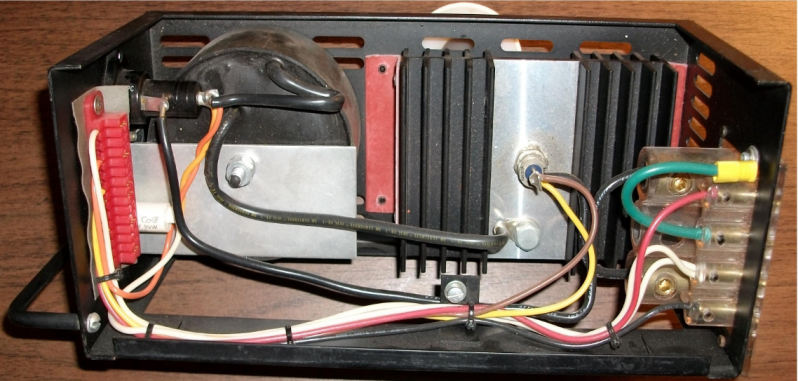Ask Hackaday: What Was Your First Electronics Win?

Back in high school, I joined the stage crew — because of course I did. As student theater groups go, it was pretty active, and with two shows to produce each year, there was always a lot of work to do. I gravitated to the lighting crew, which was a natural fit for me. Besides the electrical part of the job, there was also a lot of monkeying around on scaffolding and rickety ladders to hang the lights, which was great fun for the young and immortal. Plus there was the lighting console to run during performances, a job I eventually took over for my last two years.
Unfortunately, the lighting system was a bit pathetic. The console was mounted in the stage right wings, rather than out in the front of the house where a sensible person would put it. And despite being only about ten years old, the dimmers were already starting to fail. The board had about 20 channels, but you could always count on one of the channels failing, sometimes during a show, requiring some heroics to repatch the lights into one of the dimmers we always left as a spare, just for the purpose.
Danger Afoot
Having grown sick of this sorry state of affairs, and with the number of taped-over dimmer controls on the console beginning to outnumber the good ones, I decided to see what I could do. The console was, of course, just a front-end for the real dimmers, which in the pre-DMX days just operated on a 0 V to 10 V signal and controlled the lights connected to it with an SCR. The dimmer packs themselves were mounted to a rack on a wall inside a room adjacent to the stage, which we creatively called “the dimmer room.” The dimmer rack was mounted way up on a wall, so you had to stand on a table or a ladder to reach them. It was very sketchy.
Now, please bear in mind that this was the late 1970s, and times were different. We teens were far more free-range then, and the things we did would probably get someone arrested these days. That includes blithely taking the heavy steel enclosure off a rack of dimmer packs, each with exposed conductors carrying line current, while balancing atop a ladder. And doing it alone, without permission, and with only the barest glimmerings of knowing what I was doing. But again — immortal.

Having somehow survived the uncasing of the dimmers, I set about doing the really dangerous part — diagnosing the problem in a rack of live dimmer packs. Each dimmer had a big chunky toroidal transformer, a PCB mounted vertically, and a chunky heatsink with a huge stud-mount SCR, all mounted to a piece of fiberglass channel that screwed into the rack. The dimmers were packed pretty tightly into the rack, without a lot of space between them, so getting to the components on the PCB to test voltages was difficult. Not to mention dangerous — one false move and you might touch one of the heat sinks, all of which were connected to line voltage.
Chilling Out
Luckily, I didn’t need to touch anything to diagnose the problem. The dimmer I was working on had a clear heat-intermittent — it would only start acting up after it had been in use for a half-hour or so. I had already let the dimmer warm up and blink out, and armed with my trusty can of component cooler from Radio Shack, from my perch atop the ladder I started zapping components on the wonky dimmer’s PCB with lots of ozone-depleting Freon. Like I said, different times.

At the time, I had only ever heard of looking for heat-intermittents thanks to the Radio Shack catalog. I didn’t really have any expectation that this little trick was going to work, so imagine my surprise when I zapped one particular transistor on the PCB and heard the unmistakable sound of the light going back on — that big toroidal transformer, no doubt. I couldn’t believe that I had found the problem! I watched as the Freon-induced frost on the chilled transistor turned to water and eventually evaporated, at which point the dimmer blinked out again. Overjoyed at my discovery, I kept zapping that poor transistor back to life and watching it die, just for the sheer novelty of it. I had found the problem, all by myself.
Bursting with pride, I took the defective dimmer out of the rack — itself a perilous endeavor — unsoldered the suspect transistor, and took it to the local electronics store. No, not Radio Shack — Hatry Electronics, supplier to the local TV repair shops and the few remaining electronics manufacturers in the area. It was a real electronics shop, which racks of parts behind the counter. I gave the counterman my dying transistor, he gave me the nearest match listed in his huge dead-tree cross reference, and later that afternoon, that dimmer pack finally stopped giving us troubles.
I was thinking about this repair the other day, and it occurred to me that this was my first, unqualified “win” with electronics repair. I had only been fooling with electronics for five or so years at that point, but until that day, most of my repair attempts had ended in defeat. I had managed to fix a few cassette player that my classmates asked me to look at, but only if it was a broken drive belt or a bad solder joint on a jack. This dimmer repair was next-level stuff at the time, at least to me. I had recognized the problem, properly identified the defective component, and effected a repair. All on my own, and without killing myself.
I realize that in the large scheme of things, it was a simple repair. But it was a big deal to teenage me, and in a lot of ways, it was the beginning of everything that was to follow for me. Being able to make that repair convinced me that I could do this, and set me on the path that led to a life of fixing things. Not just electronics, of course — fixing anything now gives me a chance to get the same feeling as I had that day over 40 years ago, balancing atop a wobbly ladder and blinking a light on and off with a spray can of Freon. I never quite get the feeling back, but I keep chasing it.
Your Turn
How about you? What was your first win in electronics? Was it an epic repair like mine? Or perhaps it was more along the lines of finally getting a circuit to work — that first blinkenlight project can be a real rush, after all. Whatever it was that started you on the journey that led you to the point where you just read (and hopefully enjoyed) a story about a repair on something that was probably scrapped a few years later, let us know. We all got here somehow, and it’s interesting to find out what paths others took, and what it was that flipped their switches to the “I can do this!” position.
Post a Comment